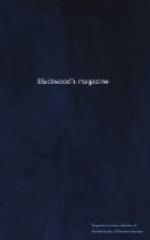All these pleas may be answered by the crown in two ways—issue may be joined on the facts they respectively set forth; or they may be demurred to; by which step, the facts, alleged in the plea, are denied to constitute a good and valid defence in law. In felony, if any of these pleas are, either in fact or in law, determined against the prisoner, he cannot be convicted or concluded by the adverse judgment; and for this reason. Formerly all felonies were punishable with death, and, in the words of Mr Justice Blackstone, “the law allows many pleas by which a prisoner may escape death; but only one plea in consequence whereof it can be inflicted, viz., the general issue, after an impartial examination and decision of the facts, by the unanimous verdict of a jury.” The prisoner, therefore, although few felonies remain still capital, is nevertheless still allowed to plead over as before. In misdemeanours, however, which are never capital, and in which, therefore, no such principle could ever have applied, the judgment on these pleas appears to follow the analogy of a civil action. Thus, if, upon issue joined, a plea of abatement be found against the accused, the judgment, on that indictment, is final; though a second indictment may be preferred against him; but if, upon demurrer, the question of law is held to be against him, the judgment is, that he do answer the indictment. If a plea in bar, either on issue joined, or on demurrer, be determined against the defendant, the judgment is in such case final, and he stands convicted of the misdemeanour.
The general issue, or the plea of “not guilty,” is the last and most usual of those answers to the indictment which we have enumerated, the others being all of extremely rare occurrence in the modern practice of the criminal law. By this plea, the accused puts himself upon his county, which county the jury are. The sheriff of the county must then return a panel of jurors. In England the jurors are taken from the “jurors’ book” of the current year. It must be observed, that a new jurors’ book comes into operation on the first of January in each year, having previously been copied from the lists of those liable to serve on juries, made out in the first instance, between the months of July and October, both inclusive, by the churchwardens and overseers of each parish, then reviewed and confirmed by the justices of the peace in petty sessions, and, through the high constable of the district, delivered to the next quarter sessions. If the proceedings are before the Queen’s Bench, an interval is allowed by the court, in fixing the time of trial, for the impanneling of the jury, upon a writ issued to the sheriff for that purpose. The trial in a case of misdemeanour in the Queen’s Bench is had at nisi prius, unless it be of such consequence as to merit a trial at bar, which is invariably had when the prisoner is tried for any capital offence in that court. But before the ordinary courts




